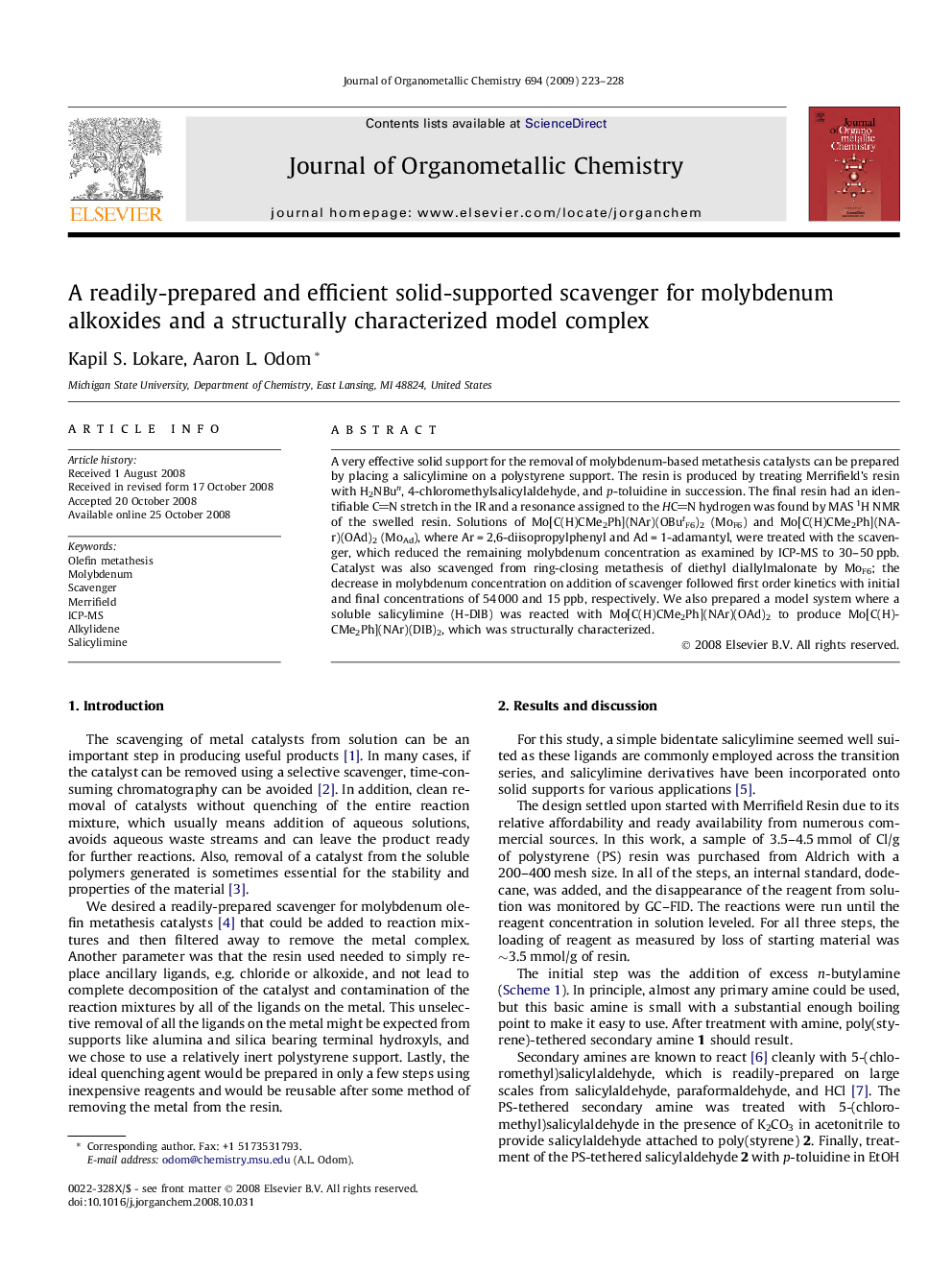| Article ID | Journal | Published Year | Pages | File Type |
|---|---|---|---|---|
| 1325417 | Journal of Organometallic Chemistry | 2009 | 6 Pages |
A very effective solid support for the removal of molybdenum-based metathesis catalysts can be prepared by placing a salicylimine on a polystyrene support. The resin is produced by treating Merrifield’s resin with H2NBun, 4-chloromethylsalicylaldehyde, and p-toluidine in succession. The final resin had an identifiable CN stretch in the IR and a resonance assigned to the HCN hydrogen was found by MAS 1H NMR of the swelled resin. Solutions of Mo[C(H)CMe2Ph](NAr)(OButF6)2 (MoF6) and Mo[C(H)CMe2Ph](NAr)(OAd)2 (MoAd), where Ar = 2,6-diisopropylphenyl and Ad = 1-adamantyl, were treated with the scavenger, which reduced the remaining molybdenum concentration as examined by ICP-MS to 30–50 ppb. Catalyst was also scavenged from ring-closing metathesis of diethyl diallylmalonate by MoF6; the decrease in molybdenum concentration on addition of scavenger followed first order kinetics with initial and final concentrations of 54 000 and 15 ppb, respectively. We also prepared a model system where a soluble salicylimine (H-DIB) was reacted with Mo[C(H)CMe2Ph](NAr)(OAd)2 to produce Mo[C(H)CMe2Ph](NAr)(DIB)2, which was structurally characterized.
Graphical abstractThe sequential addition of H2NBu, 2-hydroxy-5-(chloromethyl)benzaldehyde, and p-toluidine to Merrifield’s resin provides a scavenger for molybdenum metathesis catalysts that result in very low residual Mo concentrations. The site of reaction on the catalyst seems to be exclusively alkoxide replacement.Figure optionsDownload full-size imageDownload as PowerPoint slide
